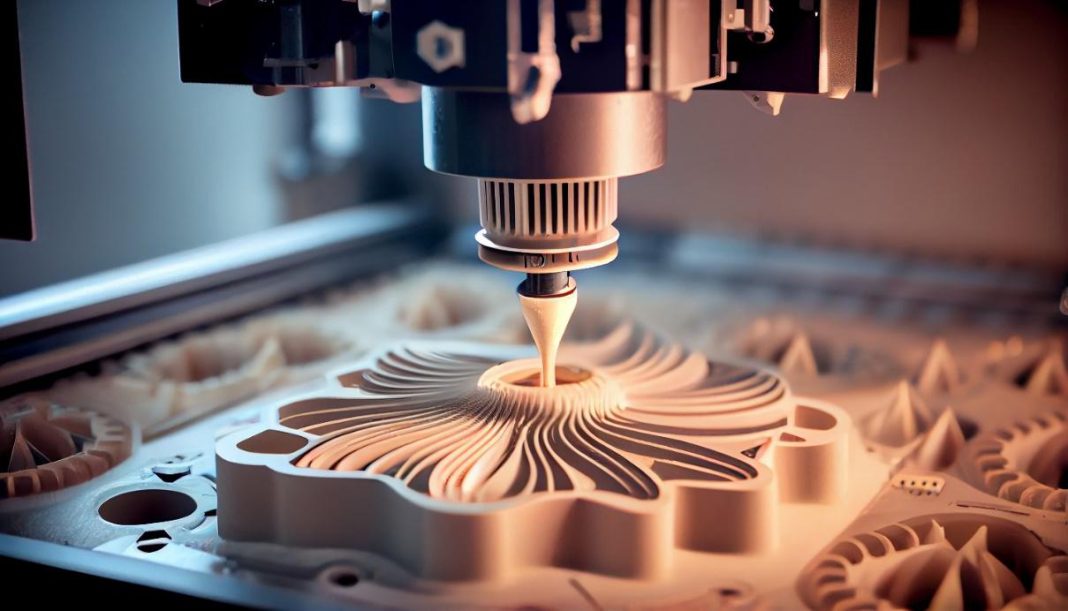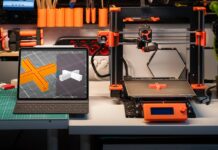Texas has long been a hub for manufacturing, contributing significantly to the U.S. economy. In recent years, the state’s manufacturing landscape has witnessed a transformation with the widespread adoption of 3D printing technology. From 3D printing services in Texas to the utilization of cutting-edge 3D printing equipment, this technology has brought about a range of advantages that are reshaping the manufacturing industry in the Lone Star State. In this article, we will explore how incorporating 3D printing is boosting the manufacturing sector in Texas.
1. Cost Efficiency
A. Reduced Material Waste
- Minimized Material Usage: 3D printing’s additive manufacturing approach deposits material layer by layer, significantly reducing waste by using only what is necessary for each part.
- Eco-Friendly Manufacturing: Reduced material waste aligns with sustainability goals, contributing to environmental responsibility.
- Cost Savings: By optimizing material usage, manufacturers in Texas can lower material costs, enhancing overall cost efficiency.
B. Lower Labor Costs
- Automation: 3D printing automates many manufacturing processes, reducing the need for extensive manual labor.
- Streamlined Operations: Texas-based manufacturers can reallocate human resources to more strategic, creative tasks, improving workforce efficiency.
- Cost Savings: Lower labor costs translate to financial savings, bolstering profitability.
C. Savings on Storage and Transportation
- On-Demand Production: 3D printing’s on-demand manufacturing approach eliminates the need for extensive warehousing of finished products.
- Reduced Storage Expenses: Texas manufacturers can reduce storage costs, freeing up capital previously tied up in inventory.
- Minimized Transportation Costs: Localized 3D printing services in Texas reduce the need for long-distance transportation, leading to cost savings and environmental benefits.
Incorporating 3D printing technology in Texas’s manufacturing sector brings notable cost efficiency advantages, from minimized material waste and reduced labor expenses to streamlined storage and transportation processes. These cost-saving benefits contribute to improved financial performance and sustainability for businesses in the Lone Star State.
2. Customization and Design Flexibility
Image Source: Freepik
A. Tailored Production for Diverse Consumer Needs
- Custom Consumer Goods: 3D printing services in Texas enable the creation of personalized consumer products, from customized smartphone cases to unique home decor items.
- Medical Customization: 3D printing facilitates the production of custom-fit medical devices, such as prosthetics and dental implants, tailored precisely to patients’ needs.
- Industrial Components: Texas-based manufacturers can utilize 3D printing to craft components tailored to specific industrial applications, improving efficiency and performance.
B. Rapid Prototyping and Iterative Design
- Accelerated Prototyping: Local 3D printing services in Texas empower manufacturers to rapidly produce prototypes, reducing development lead times.
- Cost-Effective Iterations: Iterating on product designs becomes cost-effective with 3D printing, allowing for quick adjustments and improvements.
- Innovation Catalyst: Texas manufacturers can embrace a culture of innovation by experimenting, refining, and perfecting designs without the constraints of traditional manufacturing methods.
C. Complex Geometries and Intricate Details
- Intricate Structures: 3D printing excels at creating intricate and detailed components, making it ideal for crafting jewelry, figurines, and art pieces.
- Aerospace Advancements: Texas’s aerospace industry benefits from 3D printing’s ability to produce lightweight yet complex parts for aircraft and spacecraft.
- Biomedical Precision: The technology enables the production of intricate medical implants tailored to individual patient anatomies, improving medical outcomes.
The adoption of 3D printing and 3D printing services in Texas empowers manufacturers with unparalleled customization, rapid prototyping capabilities, and the freedom to create intricate, detailed products. Texas-based businesses are at the forefront of leveraging this technology to meet diverse consumer needs, drive innovation, and excel in their respective industries.
3. Speed and Efficiency
A. Faster Production Cycles
- Rapid Prototyping: 3D printing enables swift creation of prototypes, accelerating product development cycles and reducing time-to-market.
- Efficient Small-Batch Production: Texas manufacturers can produce small batches of products quickly, meeting changing consumer demands without long production delays.
- Improved Productivity: 3D printing’s automated processes reduce downtime, allowing for continuous and efficient production.
B. On-Demand Manufacturing
- Production Flexibility: Texas-based businesses can adapt their production schedules on the fly to accommodate fluctuations in demand.
- No Need for Large Inventories: 3D printing’s on-demand capabilities reduce the need for maintaining large inventories, freeing up capital and storage space.
- Customization at Scale: On-demand manufacturing enables mass customization, allowing for efficient production of personalized products.
C. Reduced Lead Times for Products
- Just-in-Time Manufacturing: Manufacturers in Texas can employ just-in-time manufacturing strategies, reducing lead times and inventory costs.
- Quick Response to Market Changes: 3D printing’s agility allows for rapid adjustments to product designs, responding swiftly to market trends.
- Competitive Edge: Texas businesses gain a competitive edge by getting their products to market faster, capturing opportunities ahead of competitors.
The adoption of 3D printing technology in Texas’s manufacturing sector results in remarkable speed and efficiency improvements. Faster production cycles, on-demand manufacturing, and reduced lead times empower businesses to be more agile, responsive to market changes, and competitive on both the local and global stages.
4. Sustainability
Image Source: Freepik
A. Reduction in Carbon Footprint
- Efficient Material Usage: 3D printing minimizes material waste, reducing the overall environmental impact of manufacturing processes.
- Lower Energy Consumption: Compared to some traditional manufacturing methods, 3D printing can be more energy-efficient, further reducing carbon emissions.
- Local Production: Localized 3D printing services in Texas cut down on the carbon footprint associated with long-distance shipping, as products are produced closer to their final destination.
B. Eco-friendly Materials and Recycling Opportunities
- Biodegradable Materials: 3D printing materials are evolving to include biodegradable options, reducing environmental impact.
- Recycling: Some 3D printing materials can be recycled, promoting a closed-loop and sustainable manufacturing ecosystem.
- Reduced Hazardous Waste: Unlike certain traditional manufacturing processes, 3D printing typically generates fewer hazardous byproducts.
C. Localized Production and Reduced Global Shipping
- Minimal Transportation Emissions: With 3D printing, products are produced locally, reducing the need for long-distance shipping and its associated emissions.
- Supply Chain Efficiency: Texas manufacturers benefit from streamlined supply chains with reduced shipping complexities, resulting in less environmental strain.
- Resilience to Disruptions: Localized production minimizes the impact of supply chain disruptions, making it a sustainable and resilient manufacturing strategy.
The integration of 3D printing technology in Texas’s manufacturing sector promotes sustainability on multiple fronts. It reduces carbon footprints, encourages the use of eco-friendly materials, fosters recycling practices, and supports localized production, all contributing to a greener and more environmentally responsible approach to manufacturing.
5. Competitive Advantage
A. Enhanced Product Innovation
- Iterative Design: 3D printing allows rapid prototyping and iteration, fostering a culture of continuous innovation within Texas’s manufacturing firms.
- Complex Designs: Manufacturers can explore intricate and novel product designs that were previously challenging or cost-prohibitive with traditional methods.
- Customization: Texas businesses can offer unique, customized products, setting them apart in the market and attracting customers seeking personalized solutions.
B. Adapting to Changing Market Demands
- Flexibility: Localized 3D printing services in Texas provide the flexibility to adapt production schedules and designs in response to evolving market demands.
- Shorter Lead Times: 3D printing enables quicker responses to consumer trends, reducing the risk of missing out on market opportunities.
- Just-in-Time Manufacturing: Manufacturers can efficiently adjust production to match demand, minimizing excess inventory and waste.
C. Staying Ahead in the Global Manufacturing Landscape
- Competitive Edge: Texas-based manufacturers leveraging 3D printing gain a competitive edge by delivering innovative products faster and more efficiently.
- Resilience: Localized production and reduced reliance on global supply chains make businesses more resilient to disruptions.
- Global Reach: Texas manufacturers can expand their reach in the global market by offering unique, high-quality products manufactured with advanced technology.
Incorporating 3D printing technology empowers manufacturers in Texas to enhance product innovation, swiftly adapt to market changes, and maintain a leading position in the dynamic global manufacturing landscape. This technology provides a platform for sustainable growth and long-term competitiveness for businesses across the state.
Conclusion
The incorporation of 3D printing technology into Texas’s manufacturing industry is a game-changer. Its cost efficiency, customization and design flexibility, speed and efficiency, sustainability, and competitive advantages make it an invaluable asset for businesses seeking growth and innovation. As the technology continues to advance, Texas is well-positioned to lead the way in the future of manufacturing. Embracing 3D printing is not just an option; it’s a strategic move that can propel the state’s manufacturing sector to new heights.
As we look ahead, the future of manufacturing in Texas appears promising with 3D printing at its core. This technology will continue to evolve, offering even greater customization, speed, and sustainability. Texas-based manufacturers are poised to lead the way in embracing these advancements and setting new standards for efficiency and innovation in the global manufacturing landscape. By adopting 3D printing and staying at the forefront of technological progress, Texas’s manufacturing sector can look forward to a future filled with growth, resilience, and competitive strength.














